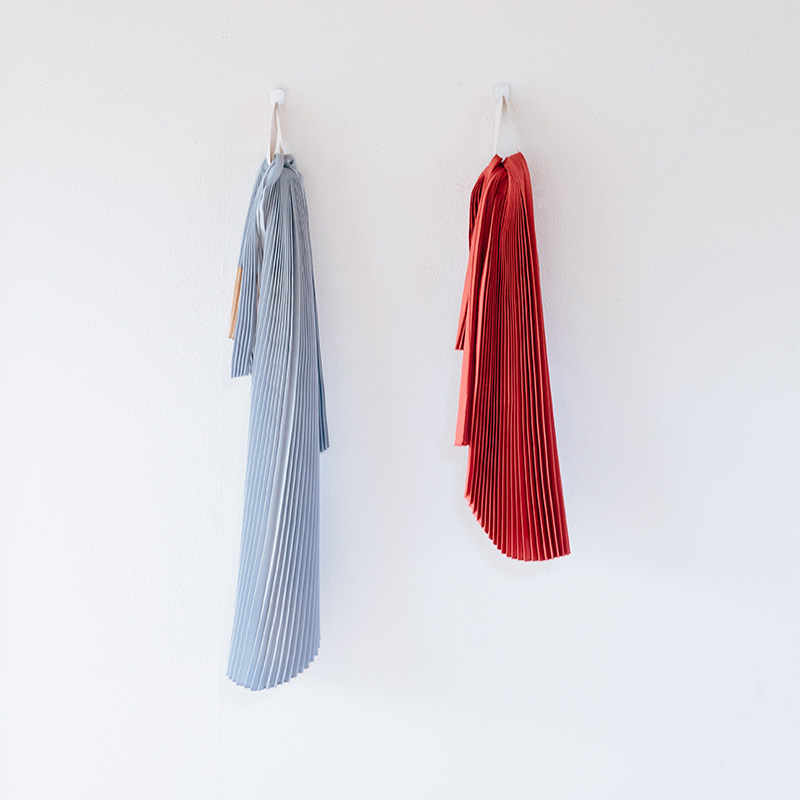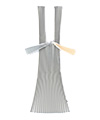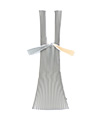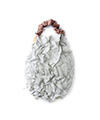土中で自然に分解し焼却しても有毒なガスが出ない
植物由来の"ポリ乳酸"と様々な表現が可能な"再生ポリエステル"
2つの素材の特性を生かしてPLECO のバッグは作られています。
たくさんの人に使って欲しい。そんな想いから
馴染みのよい日本の伝統色をモチーフに季節ごとに色を提案しています。
形も肩掛け・トート・子供も持てるミニサイズを揃えました。
2018年秋 新たにn'ui との共同制作によるエプロンシリーズ "plon" を発表。
PLECOの持つ雰囲気をベースに日常の作業に向かう気持ちを
少し持ち上げてくれるそんなエプロンを作りました。
PLECO bags are made with two eco friendly fabrics. One is plant-origin "polylactic acid(PLA)" which naturally decomposes into soil and is non-toxic when burned. The other is "recycled polyester(recycled PET)" which enables various textile expressions. We set the Japanese traditional mild-toned colors which help the bags fit well with various people and situations. Multiple sizes and forms also enable both kids and adults to carry.
An apron "plon" lifts your mood in your daily routine coming in 4 colors
that fit your skin tone.
About our materials 素材の話
土中で自然に分解し、焼却しても有毒ガスが出ない植物由来の"ポリ乳酸(PLA)"と"再生ポリエステル"2つの素材の特性を生かしてPLECO のバッグは作られています。
PLAのバッグは糸やタグ、ケアラベルも丸ごと土に還る植物由来。そのため生分解性で経年劣化があります。
ヘビーユーザーで1年前後、時々使う方で2~4年、使わなくても5~6年で使えなくなることが多いです。ただしこれはあくまでも目安です。お使いの環境や使用状況によって使える期間は様々です。また、分解が始まると簡単にスーッと破けてきます。破れ始めたら使用しないでください。
プリーツ製品の扱いやポリ乳酸についてはクナプラスのお手入れ方法ページをご理解の上ご使用ください。
再生ポリエステルでは赤や黒などPLAでは作れないものを展開していきます。こちらは土に還りませんのでご注意ください。
PLECO bags are made with two fabrics. One is plant-origin "polylactic acid(PLA)" which naturally decomposes into soil and is non-toxic when burned, the other is "recycled polyester(recycled PET)". Whole materials of PLA bags including the care labels, threads and tags are plant-origin which return to soil. Therefore, they are biodegradable and deteriorate over time.
Generally, the bags become unusable in about a year for heavy users, 2 to 4 years for those who use them sometimes, 5 to 6 years without using. But please note this is a guide. The usable duration varies in environments and situations. When the decomposition starts, the bags tear easily. Please stop using them once they start getting torn. Please visit "how to care" page for further information about PLA and pleated items care. We are producing particular color items with recycled PET such as red and black which is not available with PLA. Please note that PET items do not return to soil.
ポリ乳酸繊維について
ポリ乳酸とは化学合成法により乳酸を重合した脂肪族ポリエステル樹脂(融点170℃、ガラス転移温度:57℃)です。とうもろこしから生まれた素材であるため、バクテリアにより100%分解し、燃焼しても炭酸ガスと水になり生ゴミとして処理出来る等地球にやさしい素材です。微量ではありますが抗菌性も持ち備えております。
製造から廃棄までの環境に与える影響を考慮したライフサイクルアセスメント(LCA)から観ても、ポリ乳酸(PLA)繊維は、生産時の消化エネルギーも低く、環境負荷が非常に低い繊維です。
一方、熱と湿度が高いところに置かれると分解し、破けてしまうというデリケートなところがあります。バックとしての耐久性は使う方の環境や使用状況によっても変わり、何年と保証出来るものではありません。
ご注意いただきたい点は、クナプラスのお手入れ方法ページに記載しておりますので、ご理解の上ご使用ください。
Polylactic acid fibers
Since polylactic acid is a material derived from corn, it is naturally decomposed by bacteria in the soil and becomes carbon dioxide and water when burned, which is earth-friendly for you to handle as kitchen garbage. Also it has a particle of antibacterial activity. From the perspective of the life cycle assessment(LCA) considering the environmental effects from production to disposal, polylactic acid(PLA) fibers use low digestible energy during production whose environmental impact is very low. On the other hand, they have delicate aspect that they are decomposed and torn by placing them in high heat and humidity. The durability of the bag depends on each situation and environment of users, which we cannot tell you exactly how many years you can keep it for. All the notes on the usage we would like you to understand are on the how-to-care page. Please ensure that you have read them before using.
About our colors 色の話
日本の伝統色をモチーフに季節に合わせて色を展開しています。
名前からも分かる通り、自然物に由来する微妙な色合いが特徴です。
シーズンごと使われる色は異なりますのでご注意ください。
The color series are customized by seasons using the Japanese traditional colors as a motif. As you can tell from the color name, they are characteristic with the subtle tone derived from natural objects. Please note that the colors change by seasons.
- 02 照柿(Terigaki) ORANGE
- 熟した柿の実の色に似た濃い赤味橙色を言う
Dark reddish orange like ripe persimmon.
- 03 紅藤(Benifuji) PURPLE
- 紅がかった藤色、即ち赤味の淡い紫
Red-tinged mauve or pale reddish purple de ed from wisteria flower.
- 04 濃縹(Kokihanada) BLUE
- 藍の単一染めの純正な青色の中でも最も濃い色
The darkest color in the pure single indigo dyed blue.
- 05 石竹(Sekichiku) PINK
- ナデシコ科の植物セキチクの花のような淡い赤色のことである
Palered like flower "Seki-chiku" of Caryophyllaceous plants.
- 06 納戸鼠(Nandonezu) GRAY
- 灰色がかった青緑。納戸は暗い青色をさす
Gray blue-green. Dark blue seen in the storeroom("nando").
- 12 藍色(Aiiro) BLUE GRAY
- 植物の藍で染めた色の中でも江戸時代以降藍色として現在に伝承される色
Among the colors made from idigo dyes, the exact one named as "Aiiro" in the Edo period which is handed down until today.
- 13 菜の花(Nanohana) YELLOW
- 一面の菜の花畑に見るやや緑みを帯びた黄色
A little greeny yellow you find in the rapeseed fields.
- 14 鉄紺(Tetsukon) NAVY
- 鉄分が含まれた陶器の釉薬に由来する鉄色と紺色の中間の緑みがかった深みある青
Deep green blue between navy and iron which derives from an iron glaze for pottery.
- 19 青磁(Seiji) MINT
- 中国から伝来した磁器に由来。特に砧青磁の白みを持った緑を指す
Celadon porcelain in China, espescially the whitish green color which Kinuta celadon has.
- 20 芥子(Karashi) MUSTARD
- 芥子菜の種子を粉末にした香辛料の芥子からきた色
Mustards. The spice powder made from the seeds of mustards.
- 21 銀鼠/素色(Gin-nezu/Shiroiro) SILVER/BEIGE
- 色名としての銀は明るい色の形容であり、明るい灰色をさす / 晒さない繊維そのものの色
Light gray. "Gin" is silver but as a color it refers to bright, / The original color of non-bleached fibers.
- 23 木賊色(Tokusairo) GREEN
- シダ類の木賊の茎の色
The stem of rough horsetail of pteridophyte.
- 24 煉瓦色(Rengairo) BRICK RED
- 煉瓦の色。特に赤みをおびた茶色をさす
The reddish brown brick.
- 25 憲法色(Kenpoiro) BROWN
- 剣術家の吉岡憲法が考案した憲法染の染め色。赤みを帯びた濃い茶色
A Reddish dark brown dye invented by a swordsman Kenpo Yoshioka.
- 17 猩々緋(Shojyohi) RED
- 黄色を帯びた深紅色で中国の伝説上の生き物"猩々"からきている
Yellowish deep red which derives from "Shojo", a legendary creature in China.
- 18 濡羽色(Nurebairo) BLACK
- カラスの羽のような艶のある黒色
Glossy black like crow feathers.
- 22 猩々緋/濡羽色(Shojyohi/Nurebairo) RED/BLACK
- 黄色を帯びた深紅色/カラスの羽のような艶のある黒色
Yellowish deep red / Glossy black like crow feathers.
About technology of kna plus kna plus にまつわる技術
『kna plus』には自社の織物の技術だけでなく、様々な力(+α)が加わって商品ができています。
PLECOには、糸加工、織物、染色、縫製、プリーツ加工と北陸が持つ世界に誇れる技術が集まっています。また、開発は福井県の工業技術センターと共同で行うなど、たくさんの人の手と想いと技術がつまっています。
kna plus の商品はたくさんの人たちに支えられながらできています。
"kna plus" products are fabricated not only with its weaving technology but also with various creating powers a "plus". In PLECO bags, the technologies in Hokuriku region(Northwestern part of Japan)that we can be proud of in the world gathered together such as yarn processing, weaving, dyeing, sewing, and pleating. The development has also been in cooperation with the Industrial Technology Center of Fukui prefecture. Therefore, thery are filled with lots of people's hands, thoughts and technologies. Kna plus continues creating products with the support of many people.
